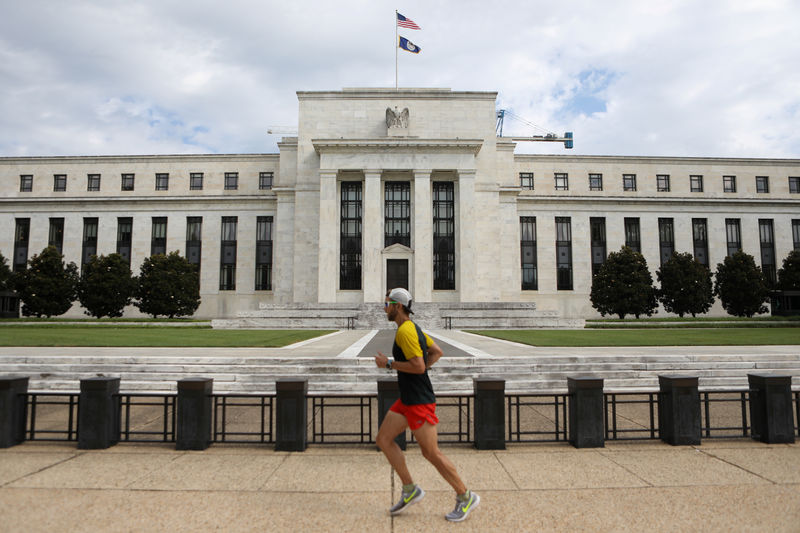Investing.com -- After the half-point rate cut announced Wednesday, the Federal Reserve could deliver more large cuts ahead should if the labor market continues to soften, JPMorgan strategists said.
The Federal Open Market Committee (FOMC) on Wednesday lowered the federal funds target by 50 basis points to a range of 4.75-5.0%. Fed Chair Jerome Powell described this significant reduction as a "recalibration" aimed at maintaining the strength of the current labor market amidst downward risks.
While the median projections, or "dot plot," from the FOMC suggest two more 25 basis point reductions this year and four in the following year, JPMorgan's outlook is for a quicker pace of rate normalization.
The firm anticipates a 50 basis point cut at the next meeting in early November, contingent on additional softening in the upcoming jobs reports.
“More benign labor data would, instead, seal the case for the FOMC’s goldilocks scenario of 25bp eases per meeting over the remainder of the year,” JPMorgan strategists said in a note.
The revised policy statement from the Fed now indicates that risks to employment and inflation objectives are "roughly in balance," suggesting that policy is nearing a neutral stance.
During the press conference, Powell maintained an optimistic tone when discussing the economy and labor market, which JPMorgan strategists interpret as hawkish for future policy. They believe there are “good reasons for him to sound upbeat.”
“In other contexts, a larger move may convey greater concern about growth, but Powell repeatedly stressed this was basically a joyous cut as ebbing inflation allows the Fed to act to preserve a strong labor market,” strategists wrote.
“Moreover, if policy is set optimally, it should return the economy to a favorable place over time.”
Most importantly, Powell reiterated that future policy decisions would be data-dependent, with labor market conditions being a key determinant in the potential for larger future rate cuts.
“If labor markets continue to soften, we could see more large cuts ahead. If job growth and the unemployment rate stabilize the path is clear for a gradual move back to neutral,” JPMorgan's team concluded.
